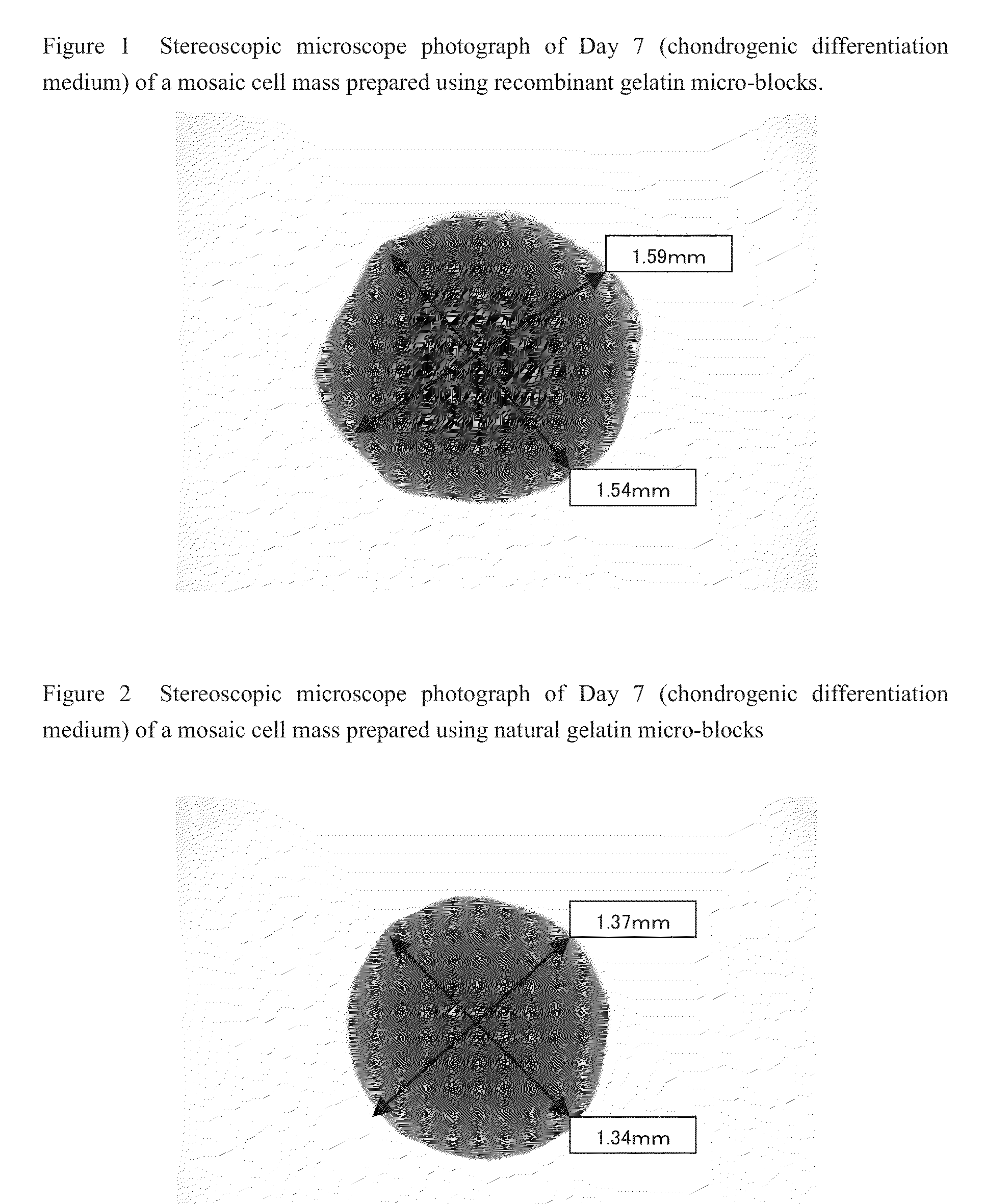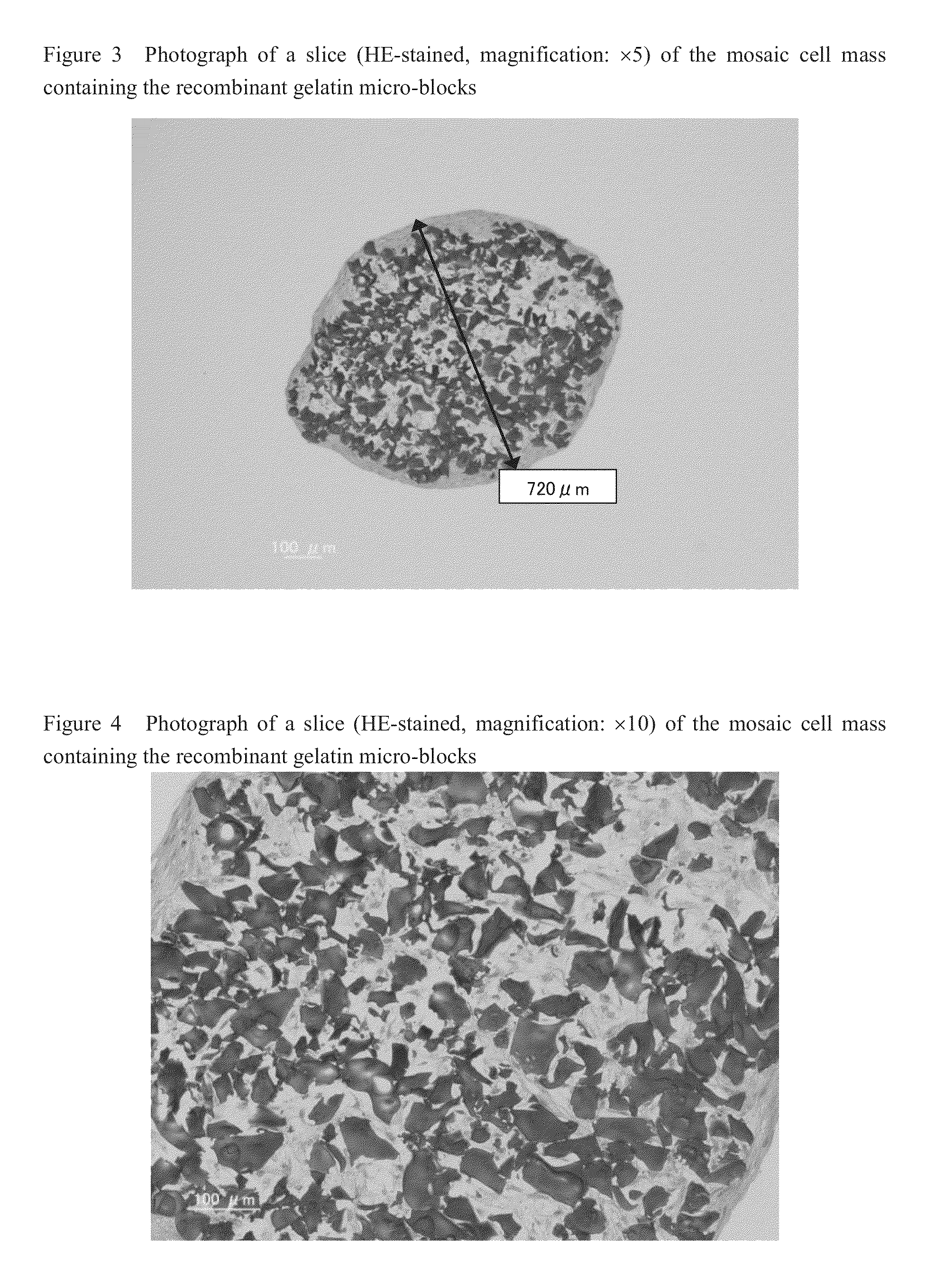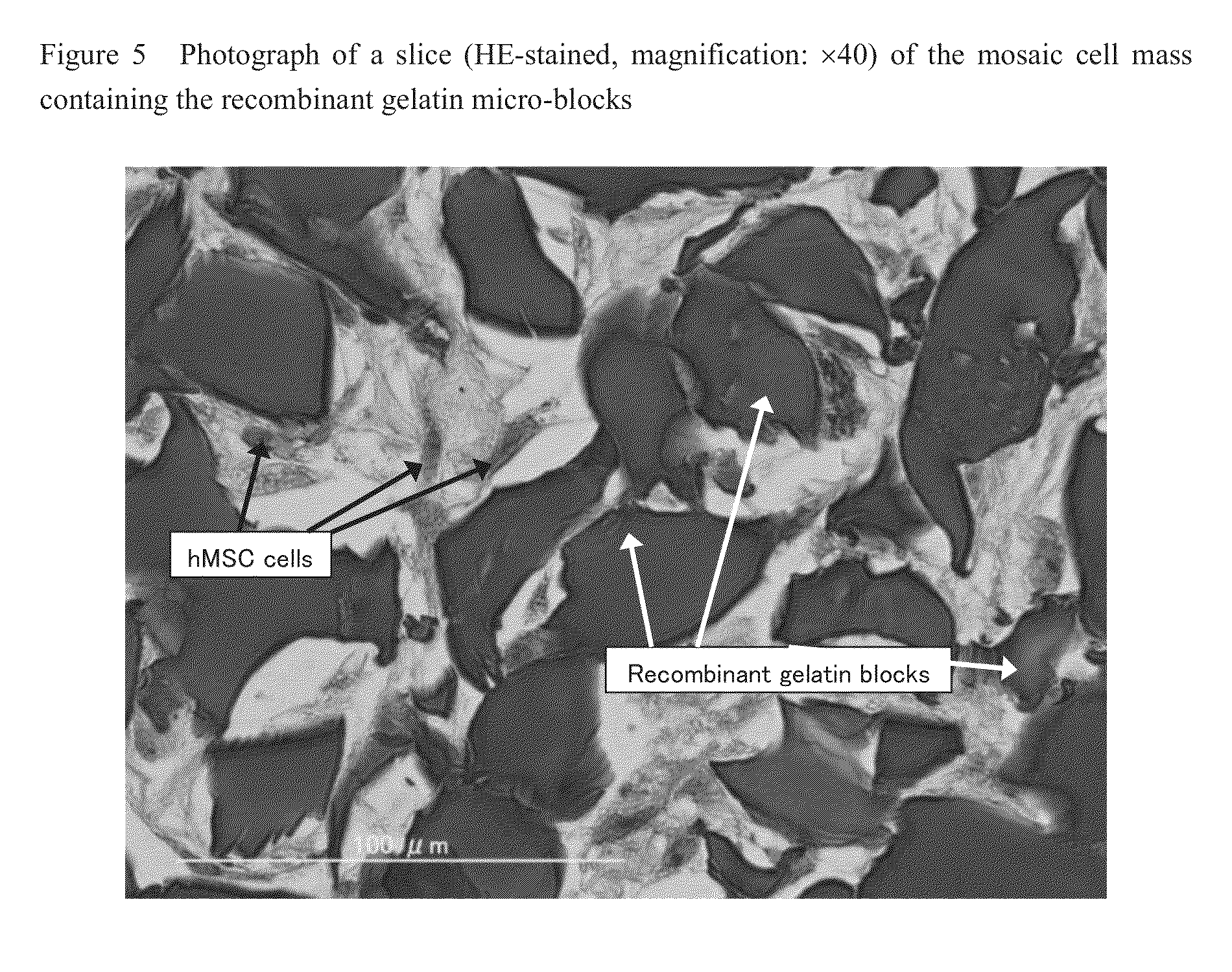Cell construct for cell transplantation and cell aggregate for cell transplantation
a cell transplantation and cell aggregate technology, applied in the field of cell aggregate for cell transplantation and cell construct for cell transplantation, can solve the problems of inability to provide thick tissues, inability to regenerate sufficiently thick tissues, and inability to provide sufficient thick tissues
- Summary
- Abstract
- Description
- Claims
- Application Information
AI Technical Summary
Benefits of technology
Problems solved by technology
Method used
Image
Examples
example 1
[0168]CBE3 described below was prepared as a recombinant peptide (described in WO2008-103041).
CBE3
[0169]Molecular weight: 51.6 kD
Structure: GAP[(GXY)63]3G
[0170]The number of amino acids: 571
The number of RGD sequences: 12
Imino acid content: 33%
Substantially 100% of amino acids are derived from the GXY repeat structures. The amino acid sequence of CBE3 does not contain any of serine, threonine, asparagine, tyrosine, and cysteine. CBE3 has an ERGD sequence.
Isoelectric point: 9.34, GRAVY value: −0.682, 1 / IOB value: 0.323
[0171]Amino acid sequence (SEQ ID NO: 1 in the Sequence Listing) (same as SEQ ID NO: 3 in WO2008 / 103041 except that X at the end was modified to “P”)
GAP(GAPGLQGAPGLQGMPGERGAAGLPGPKGERGDAGPKGADGAPGAPGLQGMPGERGAAGLPGPKGERGDAGPKGADGAPGKDGVRGLAGPIGPPGERGAAGLPGPKGERGDAGPKGADGAPGKDGVRGLAGPIGPPGPAGAPGAPGLQGMPGERGAAGLPGPKGERGDAGPKGADGAPGKDGVRGLAGPP)3G
example 2
Preparation of Recombinant Peptide Micro-Blocks
[0172]Amorphous micro-blocks were prepared as matrix blocks using the recombinant peptides CBE3. 1000 mg of the recombinant peptides was dissolved in 9448 μL of ultrapure water. After addition of 152 μL of 1 N HCl, 400 μL of 25% glutaraldehyde was added thereto at a final concentration of 1.0% and reacted at 50° C. for 3 hours to prepare a cross-linked gelatin gel. This cross-linked gelatin gel was dipped in 1 L of a 0.2 M glycine solution and shaken at 40° C. for 2 hours. Then, the cross-linked gelatin gel was shake-washed for 1 hour in 5 L of ultrapure water, and the ultrapure water was replaced by fresh one, followed by washing again for 1 hour. This procedure was repeated to complete a total of 6 washing operations. The cross-linked gelatin gel thus washed was frozen at −80° C. for 5 hours and then freeze-dried in a freeze dryer (EYELA, FDU-1000). The obtained freeze-dried product was pulverized with New Power Mill (Osaka Chemical C...
example 3
Preparation of Natural Gelatin Micro-Blocks
[0173]Amorphous micro-blocks were prepared as matrix blocks using natural gelatin (Nippi, Inc., Nippi gelatin / high grade gelatin APAT). 1000 mg of the natural gelatin was dissolved in 9448 μL of ultrapure water. After addition of 152 μL of 1 N HCl, 400 μL of 25% glutaraldehyde was added thereto at a final concentration of 1.0% and reacted at 50° C. for 3 hours to prepare a cross-linked gelatin gel. This cross-linked gelatin gel was dipped in 1 L of a 0.2 M glycine solution and shaken at 40° C. for 2 hours. Then, the cross-linked gelatin gel was shake-washed for 1 hour in 5 L of ultrapure water, and the ultrapure water was replaced by fresh one, followed by washing again for 1 hour. This procedure was repeated to complete a total of 6 washing operations. The cross-linked gelatin gel thus washed was frozen at −80° C. for 5 hours and then freeze-dried in a freeze dryer (EYELA, FDU-1000). The obtained freeze-dried product was pulverized with Ne...
PUM
| Property | Measurement | Unit |
|---|---|---|
| thickness | aaaaa | aaaaa |
| thickness | aaaaa | aaaaa |
| thickness | aaaaa | aaaaa |
Abstract
Description
Claims
Application Information
 Login to View More
Login to View More - R&D
- Intellectual Property
- Life Sciences
- Materials
- Tech Scout
- Unparalleled Data Quality
- Higher Quality Content
- 60% Fewer Hallucinations
Browse by: Latest US Patents, China's latest patents, Technical Efficacy Thesaurus, Application Domain, Technology Topic, Popular Technical Reports.
© 2025 PatSnap. All rights reserved.Legal|Privacy policy|Modern Slavery Act Transparency Statement|Sitemap|About US| Contact US: help@patsnap.com



